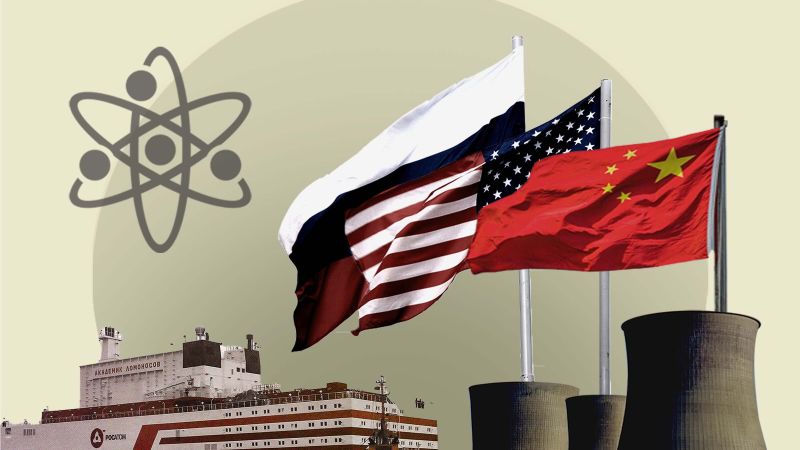Off the Siberian coast, not far from Alaska, a Russian ship has been docked at port for four years. The Akademik Lomonosov, the world’s first floating nuclear power plant, sends energy to around 200,000 people on land using next-wave nuclear technology: small modular reactors.
This technology is also being used below sea level. Dozens of US submarines lurking in the depths of the world’s oceans are propelled by SMRs, as the compact reactors are known.
SMRs — which are smaller and less costly to build than traditional, large-scale reactors — are fast becoming the next great hope for a nuclear renaissance as the world scrambles to cut fossil fuels. And the US, Russia and China are battling for dominance to build and sell them.



The small reactors on submarines can maneuver very quickly without causing fuel damage. Less power per core = less heat generation. Large reactors are limited by flux rate because they can have such high localized heating during maneuvering which has the potential to damage fuel. In that sense, SMRs could raise and lower power to meet demand or even operate on full power/standby basis like what gas plants offer during peak load.
I can’t speak to the strategy of an electric utility using SMRs, but to your point, I would think the idea would still be base load. Build a site with the potential for more SMRs to be built to meet demand in the future.
ok so i get what you’re saying here.
But there is a fundamental thing with nuclear power, where the “burn up” of nuclear fuel doesnt change. In a submarine it doesn’t matter because you’re backed by a military force and you use 70-80% or 90+% enrichment, where as on land we have 3-5% upwards of 20% for the higher enrichment stuff these days i believe.
In the water its about safety and ensuring power production, on land it’s about ensuring reliable and efficient power production. The only beneficial way of doing this is electricity storage. If you’re nuclear reactor isn’t producing power and has fuel, you are quite literally burning money. Think about it like diverting gas/coal input into a gas/coal fired power plant when power demands lower, as opposed to just lessening the consumption.
But yes it would be about 100% baseload first and foremost, everything else is a future concern, eliminate as much static load as you can and then deal with the rest in other manners.
Yeah I’m with you. I have a senior license at a US nuclear plant just for some background as I don’t know yours. What I’m saying is that I can see value of multiple, say 300MW SMRs at a single site, that can go from 0-100% very quickly compared to current 900-1100MW reactors. So the idea would be you could have a plant in Mode 3 Hot Standby ready to raise power for peak loading. Ideally you’d have at least one reactor online at all times that provides its own in house loads and the standby in house loads that would be quite low. That is the value I see.
The issue at that point would be refueling and maintenance outages. It seems ideal that the design would need to support online refueling and enough loops/system availability to do the majority of plant maintenance online. In addition, the regulatory landscape has a lot of momentum to allowing plants to move to risk informed tech specs which allow for major equipment outages in modes of applicability. If the industry as a whole can agree on a handful of SMR designs with multiple capacity options, it really could be a stop gap to hopefully fingers crossed fusion power in, I don’t know, 50-100 years from now? My two cents.